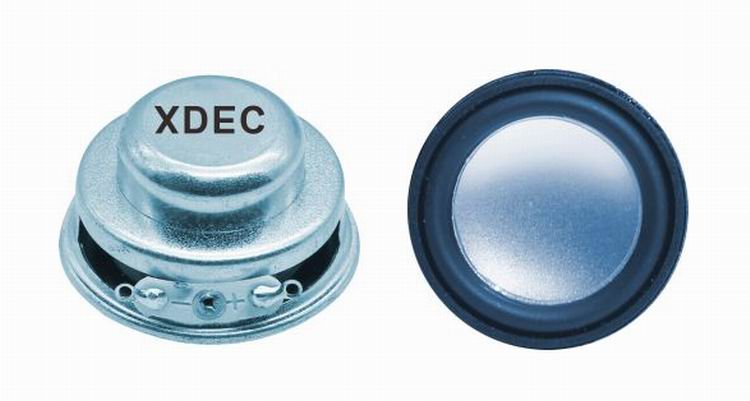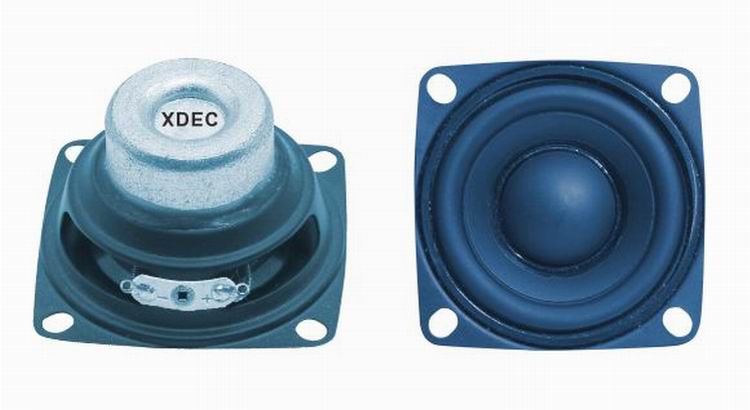Brief introduction of seven speed regulation modes of three-phase asynchronous motor
The three-phase asynchronous motor speed formula is:
n = 60f / p (1-s)
It can be seen from the above formula that changing the power supply frequency f, the number of pole pairs p of the motor, and the slip rate s can all be too great to change the speed. From the essence of speed regulation, different speed regulation methods are nothing more than changing the synchronous speed of the AC motor or not changing the synchronous rotation.
Speed ​​regulation methods that do not change the synchronous speed are widely used in production machinery, such as rotor string resistance speed regulation, chopping speed regulation, cascade speed regulation of wound motors, and application of electromagnetic slip clutches, hydraulic couplings, oil film clutches, etc. Speed ​​regulation. There are multi-speed motors that change the number of pairs of stator poles to change the synchronous speed, and the variable frequency speed regulation that changes the stator voltage and frequency can adjust the speed of the commutation motor.
From the point of view of energy consumption during speed regulation, there are two types of high-efficiency speed regulation methods and low-efficiency speed regulation methods: high-efficiency speed regulation means that the slip rate is constant, so there is no slip loss, such as multi-speed motors, variable frequency speed regulation And the speed regulation method (such as cascade speed regulation, etc.) that can recover slip loss. The speed regulation method with slip loss belongs to inefficient speed regulation, such as the rotor string resistance speed regulation method, the energy is lost in the rotor circuit; the electromagnetic clutch speed regulation method, the energy loss is in the clutch coil; the fluid coupling speed regulation The energy loss is in the oil of the fluid coupling. Generally speaking, the slip loss increases with the expansion of the speed regulation range. If the speed regulation range is not large, the energy loss is very small.
1. Variable pole logarithmic speed regulation method
This method of speed regulation is to change the number of stator pole pairs of the cage motor by changing the red connection of the stator winding to achieve the purpose of speed regulation. The characteristics are as follows:
It has hard mechanical characteristics and good stability;
No slip loss, high efficiency;
Simple wiring, convenient control and low price;
Stepped speed regulation, the step difference is large, and smooth speed regulation cannot be obtained;
It can be used in conjunction with voltage and speed regulation and electromagnetic slip clutch to obtain smooth speed regulation characteristics with higher efficiency.
This method is suitable for production machinery that does not require stepless speed regulation, such as metal cutting machine tools, elevators, lifting equipment, fans, water pumps, etc.
2. Frequency conversion speed regulation method
Frequency conversion speed regulation is a speed regulation method that changes the frequency of the motor stator power supply, thereby changing its synchronous speed. The main equipment of the frequency conversion speed control system is a frequency converter that provides frequency conversion power. The frequency converter can be divided into two categories: AC-DC-AC frequency converter and AC-AC frequency converter. At present, most domestically use AC-DC-AC frequency converters. Its characteristics:
High efficiency, no additional loss during speed regulation;
Wide application range, can be used for cage asynchronous motor;
Large speed range, hard characteristics and high accuracy;
The technology is complex, the cost is high, and maintenance and repair are difficult.
This method is suitable for occasions requiring high precision and good speed regulation performance.
3. Cascade speed regulation method
Cascade speed regulation means that an adjustable additional electric potential is inserted in series in the rotor circuit of the wound motor to change the slip of the motor to achieve the purpose of speed regulation. Most of the slip power is absorbed by the additional potential connected in series, and then additional devices are generated to return the absorbed slip power to the grid or convert the energy for use. According to the method of absorption and utilization of slip power, cascade speed regulation can be divided into motor cascade speed regulation, mechanical cascade speed regulation and thyristor cascade speed regulation. Most of them adopt thyristor cascade speed regulation. Their characteristics are:
The slip loss in the speed regulation process can be fed back to the power grid or production machinery with high efficiency;
The capacity of the device is proportional to the speed adjustment range, and the investment is low. It is suitable for production machinery whose speed adjustment range is between 70% and 90% of the rated speed;
When the speed control device fails, it can switch to full speed operation to avoid production shutdown;
The power factor of the thyristor cascade speed regulation is low, and the influence of harmonics is large.
The method is suitable for fans, water pumps, steel rolling mills, mine hoists, and extruders.
Fourth, the winding motor speed regulation method of rotor string resistance
The rotor of the wound asynchronous motor is connected with additional resistance, which increases the slip of the motor and the motor runs at a lower speed. The greater the resistance in series, the lower the motor speed. This method has simple equipment and convenient control, but the slip power is consumed on the resistor in the form of heat. It is a stepped speed regulation, and the mechanical characteristics are relatively soft.
5. Stator voltage and speed regulation method
When the stator voltage of the motor is changed, a set of different mechanical characteristic curves can be obtained, thereby obtaining different speeds. Since the torque of the motor is proportional to the square of the voltage, the maximum torque drops a lot, and its speed adjustment range is small, making it difficult for general cage motors to be applied. In order to expand the range of speed regulation, the cage motor with large rotor resistance should be used for voltage and speed regulation, such as a torque motor designed for voltage and speed regulation, or a series frequency-sensitive resistor connected to a wound motor. In order to expand the stable operating range, feedback control should be adopted when the speed regulation is above 2: 1 to achieve the purpose of automatically adjusting the speed.
The main device for voltage and speed regulation is a power supply that can provide voltage changes. At present, the commonly used voltage regulation methods include series saturation reactor, autotransformer, and thyristor voltage regulation. The thyristor voltage regulation method is the best. Characteristics of voltage and speed regulation:
The circuit of voltage and speed regulation is simple and easy to realize automatic control;
During the voltage regulation process, the slip power is consumed in the rotor resistance in the form of heat, and the efficiency is low.
Pressure and speed regulation is generally applicable to production machinery below 100KW.
Sixth, electromagnetic speed regulation motor speed regulation method
The electromagnetic speed regulating motor is composed of three parts: a cage motor, an electromagnetic slip clutch and a DC excitation power supply (controller). The power of the DC excitation power supply is small, usually composed of a single-phase half-wave or full-wave thyristor rectifier. Changing the conduction angle of the thyristor can change the magnitude of the excitation current.
The electromagnetic slip clutch is composed of three parts: armature, magnetic pole and excitation winding. The armature and the latter have no mechanical connection and can rotate freely. The coaxial connection of the armature and the motor rotor is called the active part, which is driven by the motor; the coupling of the magnetic pole with the load shaft is called the driven part. When both the armature and the magnetic poles are stationary, if the excitation winding is supplied with direct current, several pairs of magnetic poles with alternating N and S polarities will be formed along the circumferential surface of the air gap, and the magnetic flux will pass through the armature. When the armature rotates with the drag motor, due to the relative movement between the armature and the magnetic pole, the armature is induced to generate an eddy current. This eddy current interacts with the magnetic flux to generate torque, which drives the rotor with the magnetic pole to rotate in the same direction The rotation speed is always lower than the rotation speed of the armature N1. This is a slip speed regulation method. By varying the DC excitation current of the slip clutch, the output torque and speed of the clutch can be changed. Characteristics of speed regulation of electromagnetic speed regulating motor:
The device structure and control circuit are simple, reliable, and easy to maintain;
Smooth speed regulation, stepless speed regulation;
No harmonic effect on the power grid;
Loss of speed and low efficiency.
This method is suitable for medium and small power production machinery that requires flat sliding and short-time low-speed operation.
Seven, hydraulic coupling speed regulation method
The hydraulic coupling is a hydraulic transmission device, generally composed of a pump wheel and a turbine. They are collectively called working wheels and are placed in a sealed housing. The casing is filled with a certain amount of working liquid. When the pump wheel is driven by the prime mover, the liquid in it is rotated by the blades. When it enters the turbine along the outer ring of the pump wheel under the action of centrifugal force, it is given in the same direction Turbine blades use thrust to drive production machinery. The power transmission capacity of the hydraulic coupler is consistent with the relative filling volume in the shell. In the working process, changing the filling rate can change the turbine speed of the coupler to achieve stepless speed regulation. Its characteristics are:
The power adaptability range is large, which can meet the needs of different powers from tens of kilowatts to thousands of kilowatts;
Simple structure, reliable work, convenient use and maintenance, and low cost;
Small size, large capacity;
The control is easy to adjust, and it is easy to realize automatic control.
This method is suitable for the speed regulation of fans and pumps.
Multimedia speaker:
Multimedia Speaker is a kind of speaker unit which is used for multimedia devices. Multimedia Speakers are divided into tweeter, midrange, Woofer and full range according to their working frequency response ranges. Multimedia speakers have loud sound, wide frequency response range and rich bass. These speaker units are widely used in Bluetooth speakers, portable speakers, waterproof speakers, computer speakers, car audio , TV audio and robots
Our main multimedia speakers are full ranges speakers units:
1) From the diameter: we have speakers in 1" ~ 3".
2) From the power output, we have speakers of 2W ~ 15W.



FAQ
Q1. What
is the MOQ?
XDEC: 2000pcs for one model.
Q2. What is the delivery lead time?
XDEC: 20 days for normal orders, 15 days for urgent orders.
Q3. What are the payment methods?
XDEC: T/T, PayPal, Western Union, Money Gram.
Q4. Can you offer samples for testing?
XDEC: Yes, we offer free samples.
Q5. How soon can you send samples?
XDEC: We can send samples in 3-5 days.
Multimedia Speakers
Multimedia Speaker,Multimedia Speaker Driver,Mini Speaker,Desktop Computer Speakers
Shenzhen Xuanda Electronics Co., Ltd. , https://www.xdecspeaker.com